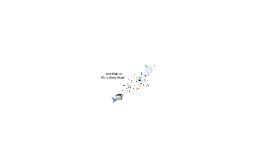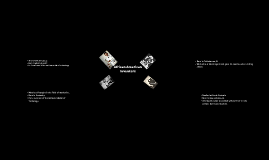african american
Transcript: Biography Petters teaches quantitative finance in the Fuqua School of Business and works with MBA students to promote social entrepreneurship in science and technology in Belize and the developing world. He currently holds the Benjamin Powell endowed Chair at Duke University. Petters's work and life were profiled in the New York Times, on NOVA, and at Big Think. Petters was the only signatory of the Group of 88 who ran controversial ads during the 2006 Duke University lacrosse case to apologize for the group's ads after all players were declared innocent. information about him Following his 1991-2001 body of mathematical lensing work, Petters turned to more astrophysical lensing issues from 2002-2005. In collaboration with astronomers, he applied some of the mathematical theory in to help develop a practical diagnostic test for the presence of dark substructures in galaxies lensing quasars; classify the local astrometric (centroid) and photometric curves of an extended source when it crosses fold and cusp caustics due to generic lenses; predict the quantitative astrometric curve's shape produced by Galactic binary lenses. The classified local properties of the astrometric curves revealed a characteristic S-shape for fold crossings, parabolic and swallowtail features for cusp crossings, and a jump discontinuity for crossings over the fold arcs merging into a cusp. A formula for the size of the jump was also found. Petters is renowned for his pioneering work in the mathematical theory of gravitational lensing. Over the ten year period from 1991–2001, Petters systematically developed a mathematical theory of weak-deflection gravitational lensing, beginning with his 1991 MIT Ph.D. thesis on "Singularities in Gravitational Microlensing" and followed by the 12 papers below. The papers resolved an array of theoretical problems in weak-deflection gravitational lensing covering image counting, fixed-point images, image magnification, image time delays, local geometry of caustics, global geometry of caustics, wavefronts, caustic surfaces, and caustic surfing. His work culminated with a 2001 mathematical tome that, among other things, systematically created a framework of stability and genericity for k-plane gravitational lensing. The book drew upon powerful tools from the theory of singularities and put the subject of weak-deflection k-plane gravitational lensing on a rigorous and unified mathematical foundation. During 2005-2007, Petters collaborated with astronomers and physicists to explore gravitational lensing in directions beyond its traditional confines in astronomy. In a series of three mathematical physics papers (2005–2006) with the astronomer Keeton, he utilized higher-order gravitational lensing effects by compact bodies to test different theories of gravity with Einstein's general theory of relativity among them. The first two papers computed beyond the standard weak-deflection limit the first- and second-order corrections to the image positions, magnifications, and time delays due to lensing in general relativity and alternative gravitational theories describable within the PPN formalism, and even determined lensing invariants for the PPN family of models. Their findings were applied to the Galactic black hole, binary pulsars, and gravitational microlensing scenarios to make testable predictions about lensed images and their time delays. The third paper took on the difficult issue of how to test hyperspace models like braneworld gravity that postulate an extra dimension to physical space. The paper developed a semi-classical wave theory of braneworld black hole lensing and used that theory along with braneworld cosmology to predict a testable signature of microscopic braneworld black holes on gamma-ray light. Additionally, in a 2007 paper, Petters and Werner found a system of equations that can be applied to test the Cosmic Censorship Hypothesis observationally using the realistic case of lensing by a Kerr black hole. Petters is the recipient of numerous awards and honors, which includes an Alfred P. Sloan Research Fellowship in Mathematics (1998), a CAREER award from the National Science Foundation (1998), and being the first winner of a Blackwell-Tapia Prize (2002). He was selected in 2006 by the National Academy of Sciences to be part of a permanent Portrait Collection of Outstanding African-Americans in Science, Engineering, and Medicine. In 2008 Petters was also included among the Human Relations Associates' list of "The Twenty-Five Greatest Scientists of African Ancestry," which went back as early as the 18th century. He received an honorary Doctor of Science from his alma mater Hunter College in 2008. Petters was named by the Queen of England in 2008 to membership in the Most Excellent Order of the British Empire. Petters is the recipient of numerous awards and honors, which includes an Alfred P. Sloan Research Fellowship in Mathematics (1998), a CAREER award from the National Science Foundation

















